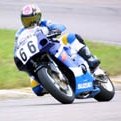-
Join SingaporeBikes.com today! Where Singapore Bikers Unite!
Thank you for visiting SingaporeBikes.com - the largest website in Singapore dedicated to all things related to motorcycles and biking in general.
Join us today as a member to enjoy all the features of the website for FREE such as:
- Latest Motorcycle News
- SGBikeMart / Classified Ads
- Forums
- Blogs
- Picture/Video Gallery
- Motorcycle Clubs
- Event Calendar
- and many more!
Registering is free and takes less than 30 seconds! Join us today to share information, discuss about your modifications, and ask questions about your bike in general.
Thank you for being a part of SingaporeBikes.com!
Bike Setup
-
Latest Topics
-
[[Instant~Solution #855-749-9729 ]]QuickBooks Keeps Crashing Windows 11, 10 and Mac
By lavender11, in General Bike Chat
- 0 replies
- 19 views
-
{Quick-Help}QuickBooks Has Stopped Working After Update Windows 10/11
By lavender11, in General Bike Chat
- 0 replies
- 19 views
-
- 1 reply
- 705 views
-
Royal Jordanian Damascus Office
By jacksmith243, in General Servicing, Maintenance, Technical & D.I.Y. Discussions
- 0 replies
- 42 views
-
EVA Air at LAX Terminal – Your Premium Gateway to Asia
By williamkevin2430, in General Servicing, Maintenance, Technical & D.I.Y. Discussions
- 0 replies
- 67 views
-
.png.f357c4bbda45b8d1f0301390a48a7ff4.png)




Recommended Posts
Join the conversation
You can post now and register later. If you have an account, sign in now to post with your account.